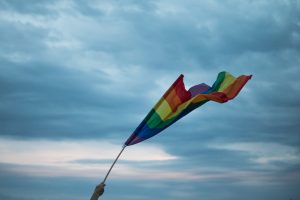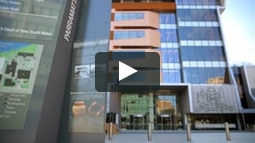The assumption has always been that domestic violence is primarily a women’s issue. However, domestic violence also affects the LGBTIQ community and at alarming levels. A 2014 report conducted by the University of NSW entitled Calling It What It Really Is reveals that just under 35% of the 813 survey respondents said they experienced sexual or physical violence in a previous relationship.
The number rose even higher to 53% if people identified as transgender, intersex or gender diverse.
A Royal Commission into family violence puts that number even higher with 62% of transgender males and 43% of intersex females reporting having experienced abuse in their relationships (Source: Pitts et al 2006; ACON 2011; de Visser et al 2003).
What does gay domestic violence look like?
Similar to gender based domestic violence against women gay domestic violence includes physical, emotional and sexual abuse. However, the form in which this abuse takes differs due to issues specific to the LGBTIQ community.
For example, the report highlights how perpetrators call their partners hurtful homophobic or transphobic names or threaten to “out” their HIV status or sexuality to family, friends and co-workers. There have also been cases where partners have withheld HIV medication or gender transitioning drugs.
The report says emotional and/or verbal abuse is much more likely to occur than physical or sexual abuse in gay domestic violence and unfortunately this type of abuse often goes unreported. This might be because as the report suggests, this type of abuse is not considered domestic violence or it is not thought to be as serious as physical or sexual acts of violence.
Domestic violence in same-sex relationships is often not recognised because it does not look the same as it does in heterosexual relationships. However, whether it is perpetrated against a woman or a same sex partner, domestic violence is still about power and control.
Another similarity between the two victim groups is that the perpetrators are usually male or identify as male.
People who identify as LGBTIQ already experience ‘higher levels of depression, anxiety, self-harm, or other illness’ when compared to non-LGBTIQ people (Rosenstreich, 2013) due to histories of marginalization and discrimination, which serves to exacerbate “people’s vulnerability to, and the impact of, family violence.”
Why does domestic violence get un/under reported in the gay community?
Domestic violence is referred to by some as a silent epidemic. Many cases of domestic violence in the LGBTIQ community go unreported for a number of reasons. For example, domestic violence in male homosexual relationships has traditionally not been taken seriously. If one partner complains of abuse by a male partner both men are usually arrested.
Because domestic violence has traditionally been viewed from a feminist lens, health and public service workers have focused exclusively on helping women abused by their heterosexual male partners. As a result, mainstream organisations have limited programs and training that specifically target people within the LGBTIQ community who experience intimate partner violence.
It is because of this lack of training and awareness, as well as a history of discrimination by police and other service providers, that people in the LGBTIQ community are less likely to seek support, according to a report by the Domestic Violence Resource Centre of Victoria. For example, only one in ten, victims of gay domestic violence chose to report their abuse to police (ACON, 2011).
Often LGBTIQ communities see the mainstream family violence sector as either ignorant to their needs or worse hostile. As a result, the report says it is critical that mainstream services either “extend or modify their existing frameworks” to not just include, but specifically “target the LGBTIQ population” when it comes to gay domestic violence.
Even if an organisation is aware of LGBTIQ issues, there is often very little knowledge on how to address it the report further explains.
This lack of knowledge in LGBTIQ issues means there are very few options especially for trans women/gay/bisexual/trans men/intersex people who need emergency accommodations or crisis support.
Dr Philomena Horsley, a research fellow in LGBTI health at La Trobe University, suggests that “life-long, lived experience of abuse, violence and discrimination can result in a high tolerance of violence in personal relationships and an unwillingness to seek help from services.”
According to section 5(1)(a) of the Family Violence Protection Act 2008, family violence is defined as:
Behaviour by a person towards a family member of that person if that behaviour is—physically or sexually abusive; or emotionally or psychologically abusive; or threatening; or coercive; or in any other way controlling or dominating, [which] causes that family member to feel fear for the safety or wellbeing of that family member or other person.
We need to recognize that abuse is abuse whether people are in a heterosexual or a same-sex relationship. As such we need to ensure that anyone who is victimized by intimate partner violence regardless of gender identity or sexual orientation receive the support they need.
We also need to move beyond the default legal understanding of the term family as one that only includes cisgendered, heterosexual couples and their children, and excludes those that fit outside of those confines.
Anyone who has experienced domestic or sexual violence can call the national sexual assault, domestic family violence counselling service at 1800 Respect on 1800 737 732 or visit 1800respect.org.au







